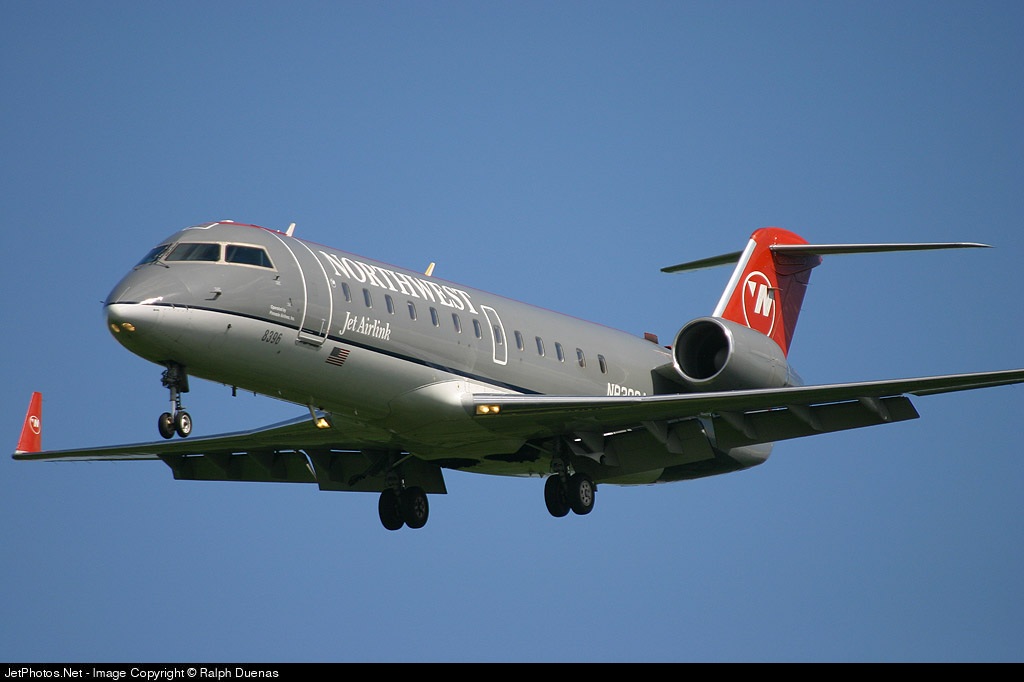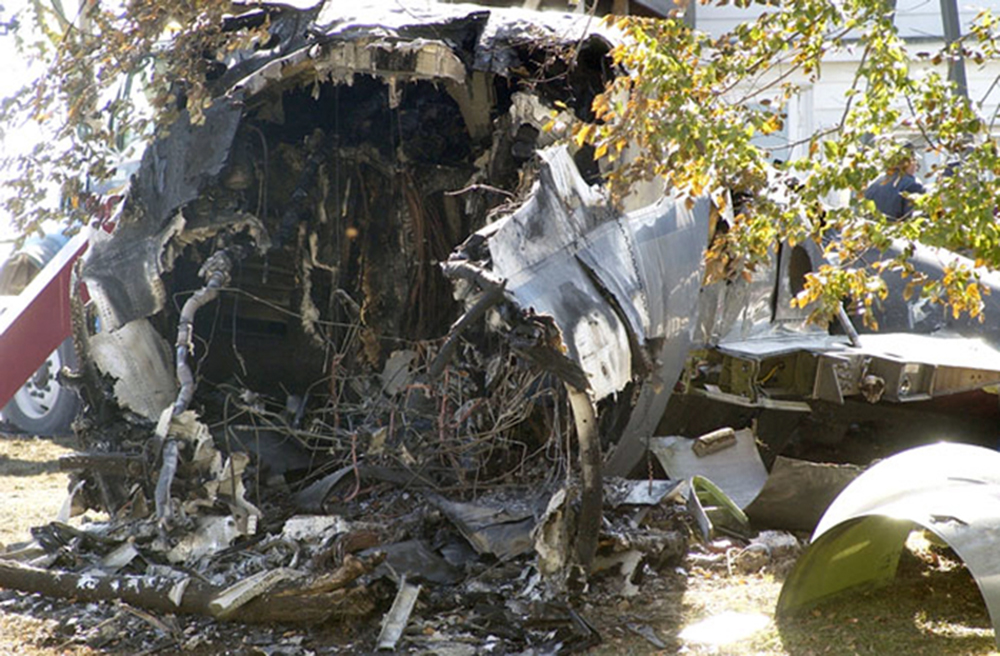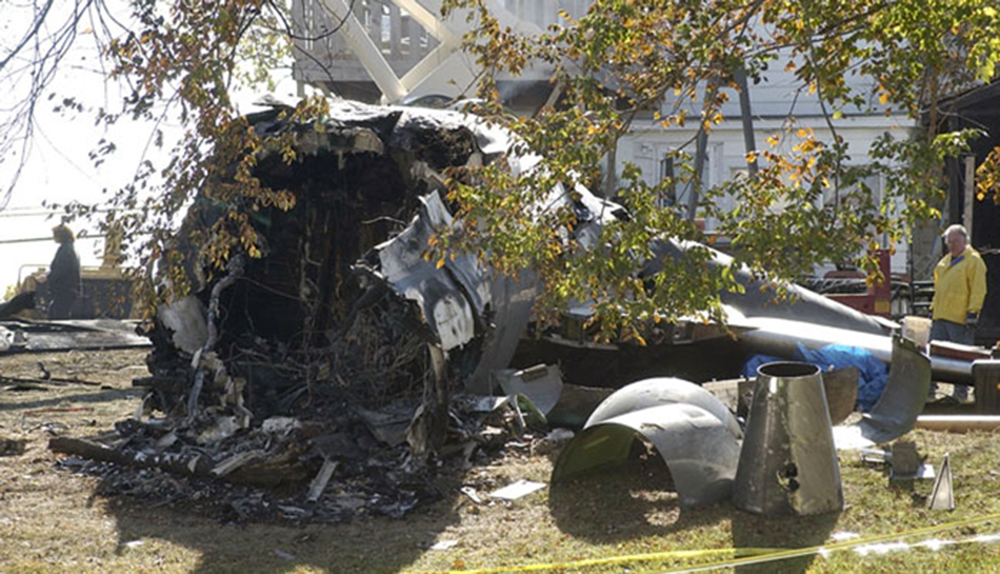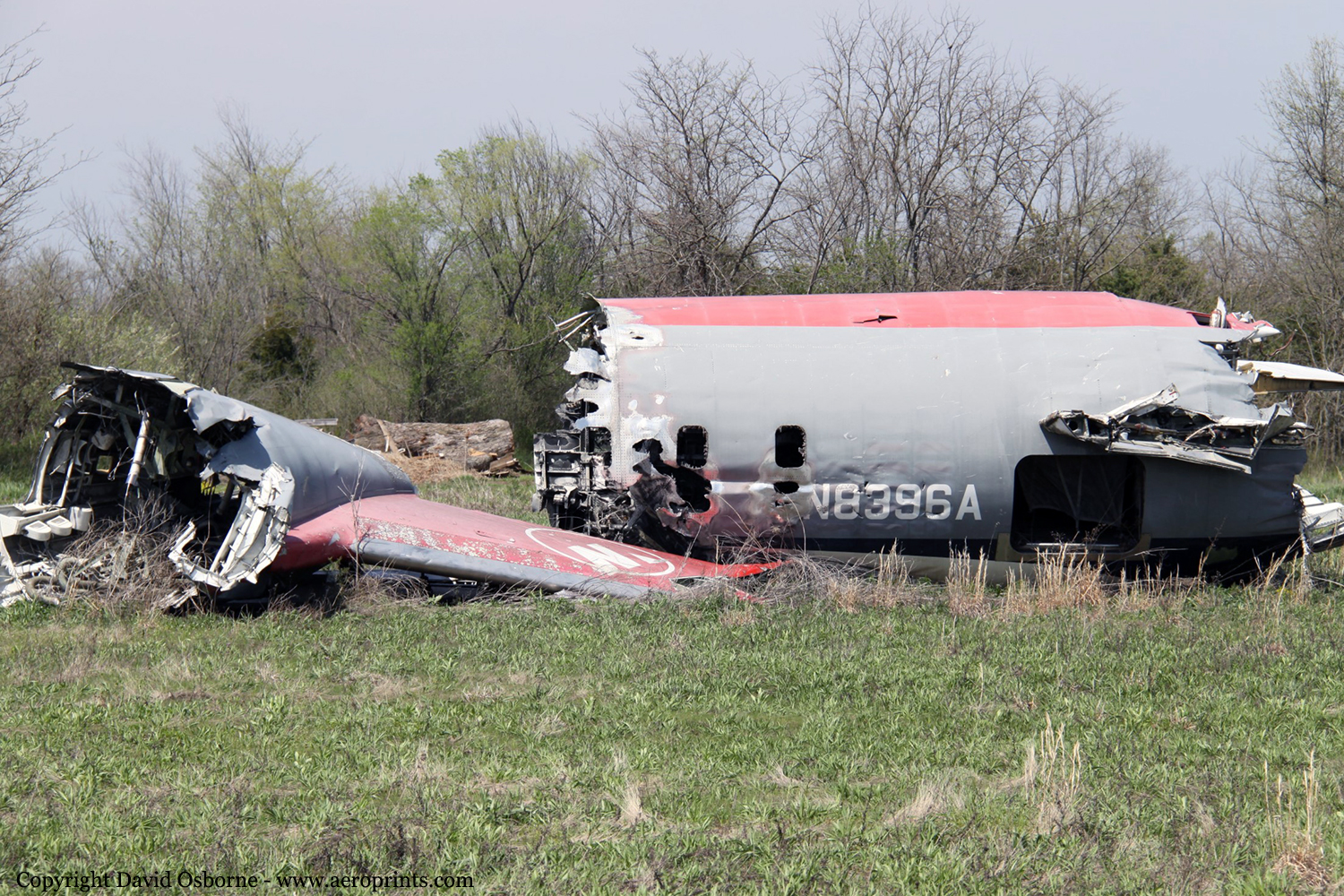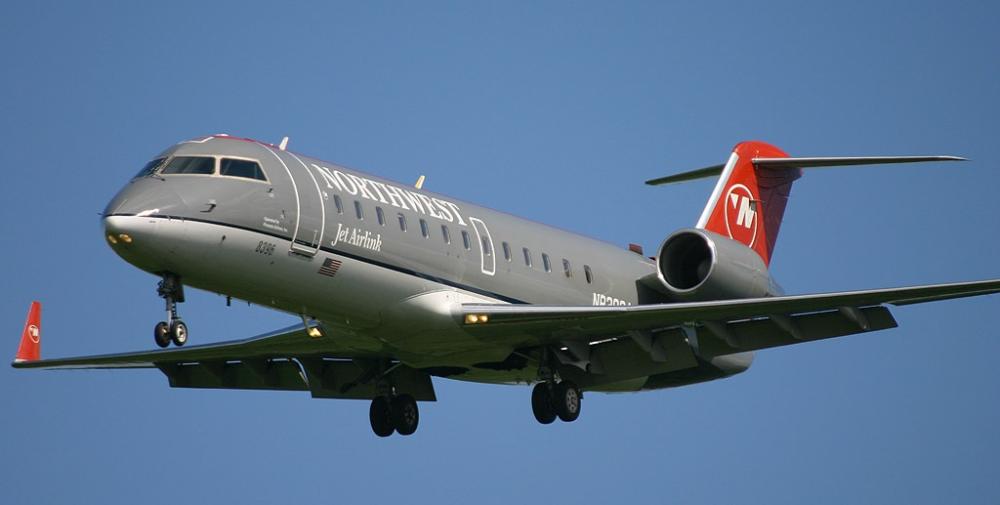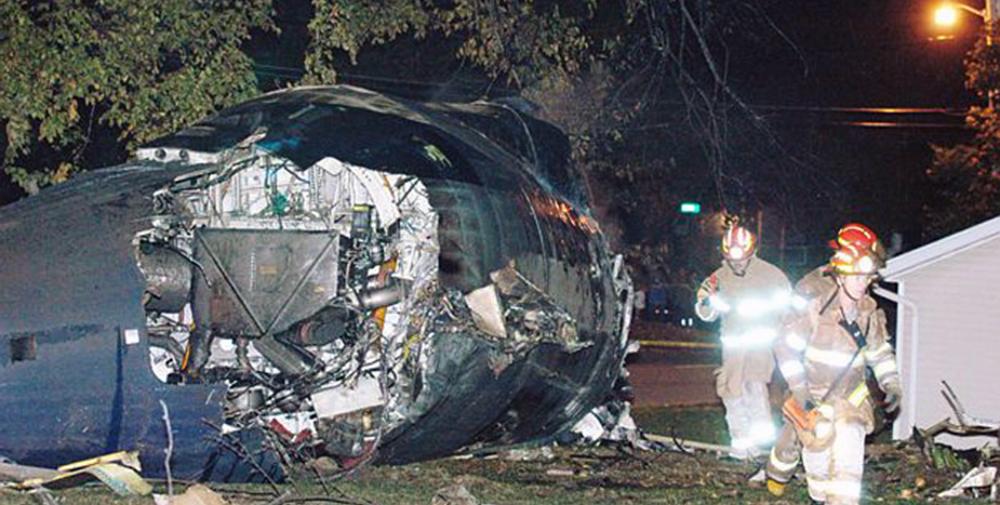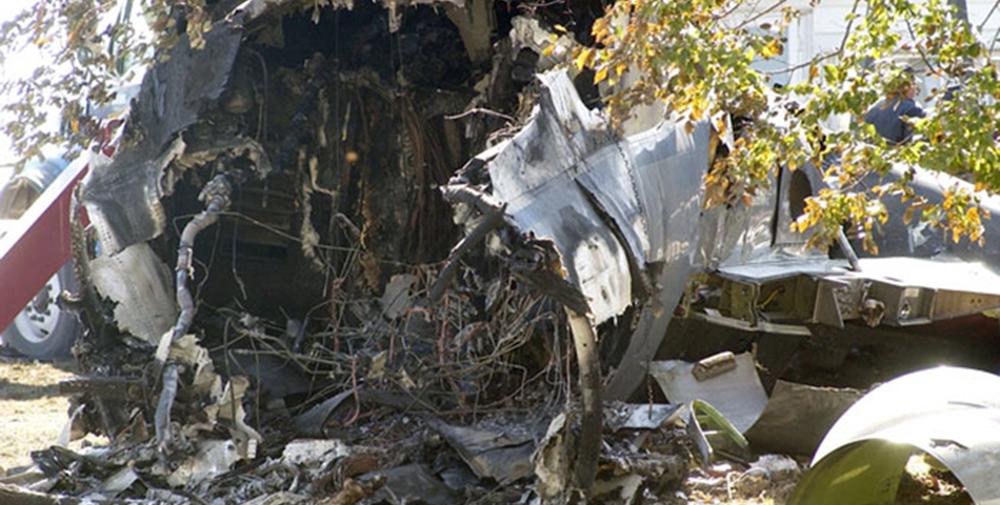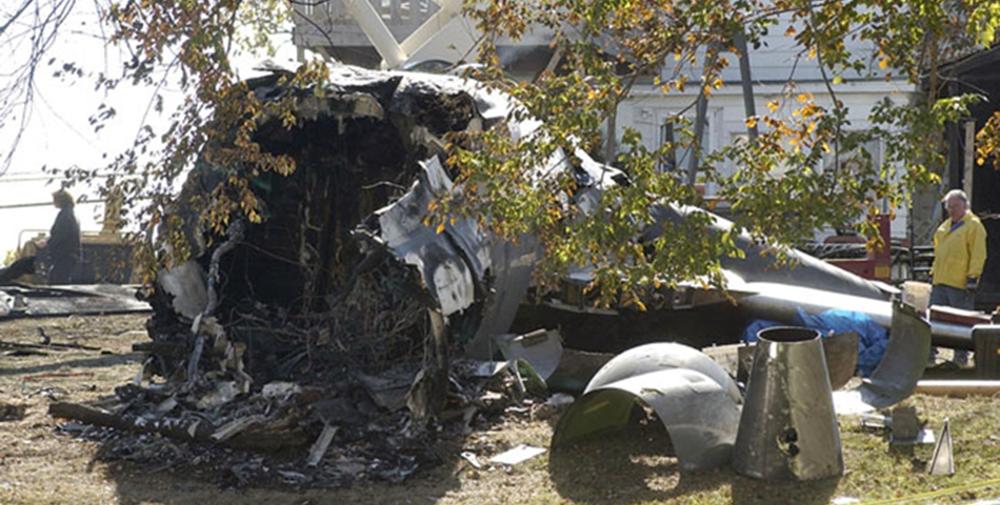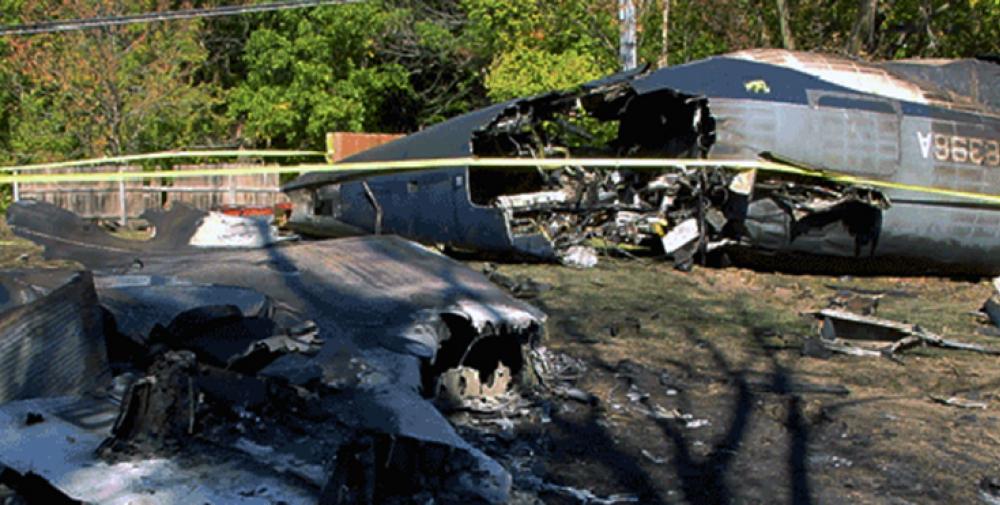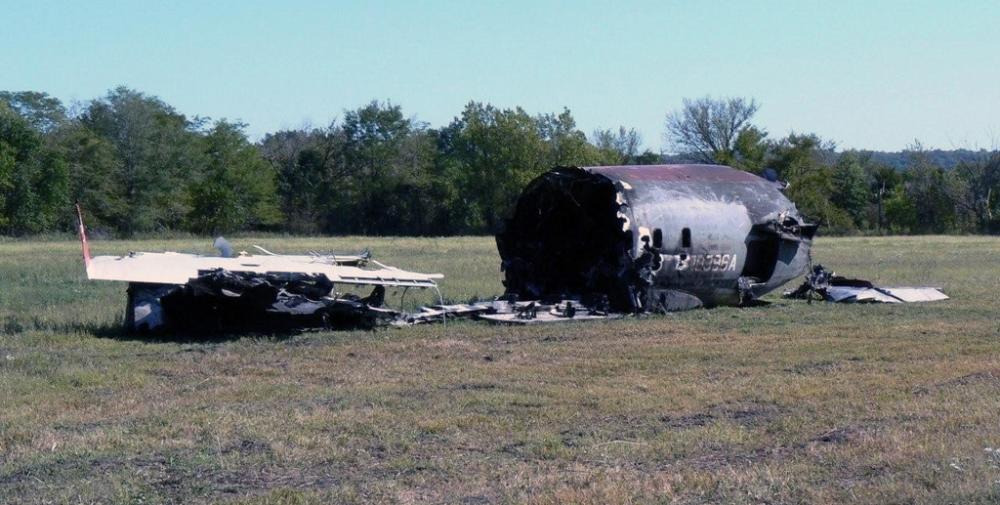Date & Time:
Oct 14, 2004 at 2215 LT
Type of aircraft:
Canadair RegionalJet CRJ-200
Registration:
N8396A
Flight Phase:
Flight
Flight Type:
Ferry
Survivors:
No
Site:
City
Schedule:
Little Rock – Minneapolis
MSN:
7396
YOM:
2000
Flight number:
NW3701
Country:
United States of America
Region:
North America
Crew on board:
2
Crew fatalities:
2
Pax on board:
0
Pax fatalities:
0
Other fatalities:
0
Total fatalities:
2
Captain / Total hours on type:
973
Copilot / Total hours on type:
222
Aircraft flight hours:
10168
Aircraft flight cycles:
9613
Circumstances:
On October 14, 2004, about 2215:06 central daylight time, Pinnacle Airlines flight 3701 (doing business as Northwest Airlink), a Bombardier CL-600-2B19, N8396A, crashed into a residential area about 2.5 miles south of Jefferson City Memorial Airport, Jefferson City, Missouri. The airplane was on a repositioning flight from Little Rock National Airport, Little Rock, Arkansas, to Minneapolis-St. Paul International Airport, Minneapolis, Minnesota. During the flight, both engines flamed out after a pilot-induced aerodynamic stall and were unable to be restarted. The captain and the first officer were killed, and the airplane was destroyed. No one on the ground was injured.
Probable cause:
The National Transportation Safety Board determines that the probable causes of this accident were:
1) the pilots' unprofessional behavior, deviation from standard operating procedures, and poor airmanship, which resulted in an in-flight emergency from which they were unable to recover, in part because of the pilots' inadequate training;
2) the pilots' failure to prepare for an emergency landing in a timely manner, including communicating with air traffic controllers immediately after the emergency about the loss of both engines and the availability of landing sites; and
3) the pilots' failure to achieve and maintain the target airspeed in the double engine failure checklist, which caused the engine cores to stop rotating and resulted in the core lock engine condition.
Contributing to this accident were:
1) the engine core lock condition, which prevented at least one engine from being restarted, and
2) the airplane flight manuals that did not communicate to pilots the importance of maintaining a minimum airspeed to keep the engine cores rotating.
1) the pilots' unprofessional behavior, deviation from standard operating procedures, and poor airmanship, which resulted in an in-flight emergency from which they were unable to recover, in part because of the pilots' inadequate training;
2) the pilots' failure to prepare for an emergency landing in a timely manner, including communicating with air traffic controllers immediately after the emergency about the loss of both engines and the availability of landing sites; and
3) the pilots' failure to achieve and maintain the target airspeed in the double engine failure checklist, which caused the engine cores to stop rotating and resulted in the core lock engine condition.
Contributing to this accident were:
1) the engine core lock condition, which prevented at least one engine from being restarted, and
2) the airplane flight manuals that did not communicate to pilots the importance of maintaining a minimum airspeed to keep the engine cores rotating.
Final Report:
N8396A.pdf1.73 MB
